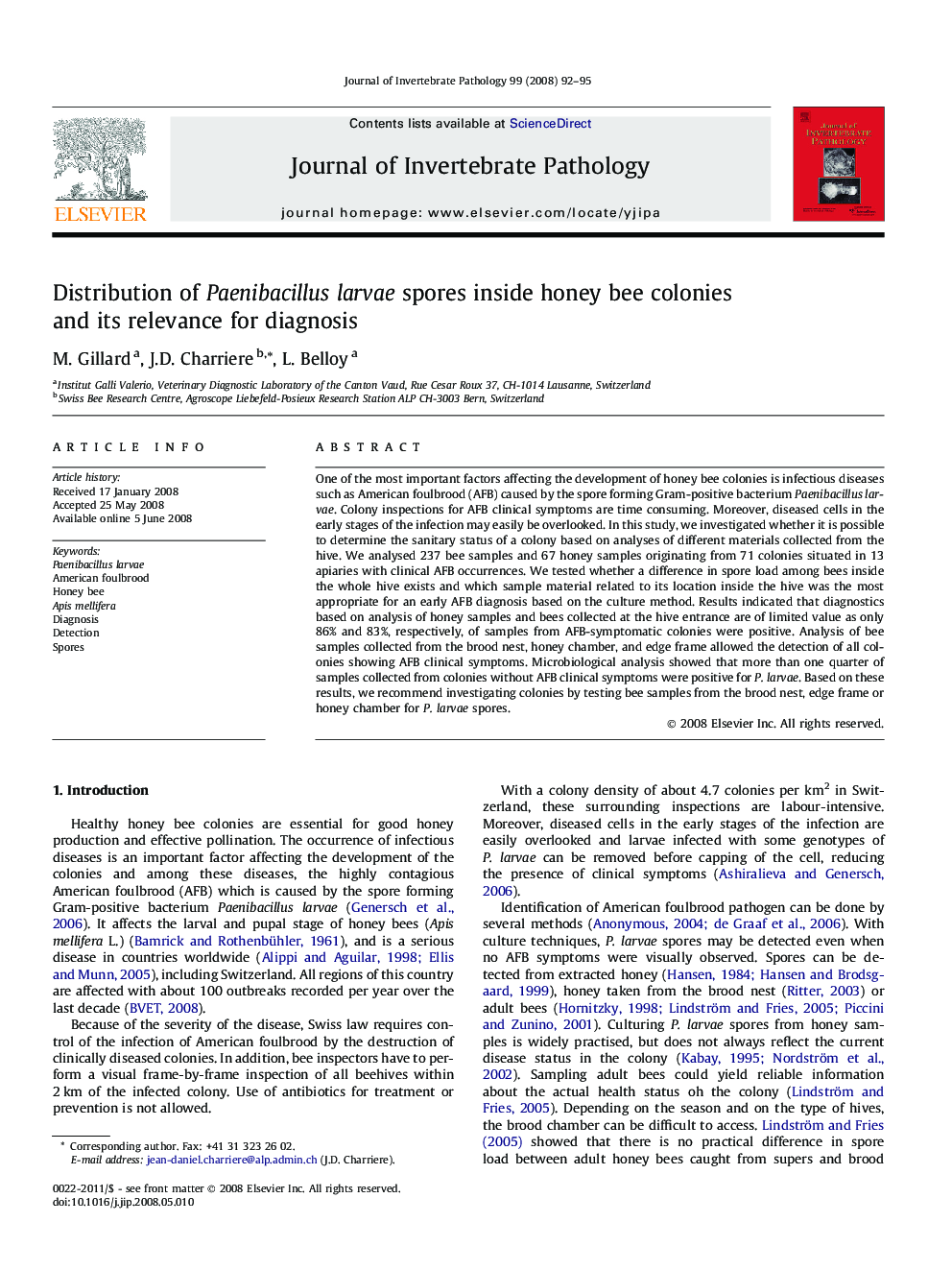| Article ID | Journal | Published Year | Pages | File Type |
|---|---|---|---|---|
| 4558418 | Journal of Invertebrate Pathology | 2008 | 4 Pages |
One of the most important factors affecting the development of honey bee colonies is infectious diseases such as American foulbrood (AFB) caused by the spore forming Gram-positive bacterium Paenibacillus larvae. Colony inspections for AFB clinical symptoms are time consuming. Moreover, diseased cells in the early stages of the infection may easily be overlooked. In this study, we investigated whether it is possible to determine the sanitary status of a colony based on analyses of different materials collected from the hive. We analysed 237 bee samples and 67 honey samples originating from 71 colonies situated in 13 apiaries with clinical AFB occurrences. We tested whether a difference in spore load among bees inside the whole hive exists and which sample material related to its location inside the hive was the most appropriate for an early AFB diagnosis based on the culture method. Results indicated that diagnostics based on analysis of honey samples and bees collected at the hive entrance are of limited value as only 86% and 83%, respectively, of samples from AFB-symptomatic colonies were positive. Analysis of bee samples collected from the brood nest, honey chamber, and edge frame allowed the detection of all colonies showing AFB clinical symptoms. Microbiological analysis showed that more than one quarter of samples collected from colonies without AFB clinical symptoms were positive for P. larvae. Based on these results, we recommend investigating colonies by testing bee samples from the brood nest, edge frame or honey chamber for P. larvae spores.
